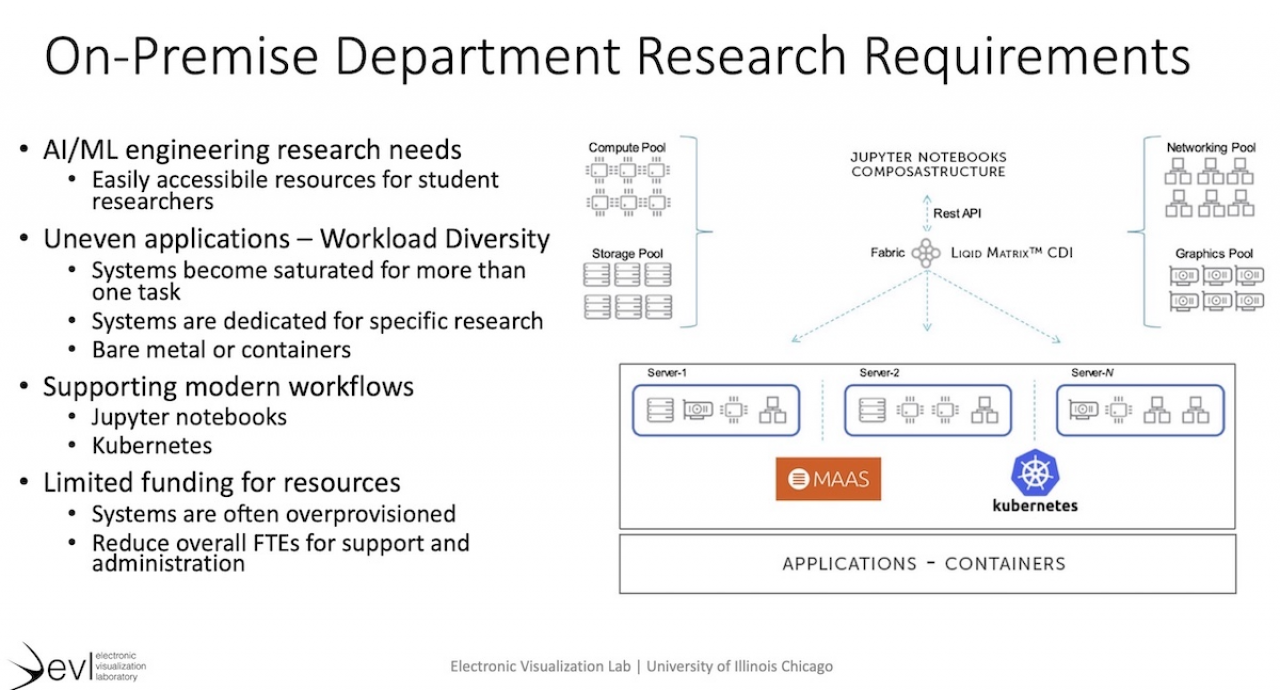|
|
||||||||||||||||||
Composable Infrastructures for an Academic Research Environment: Lessons Learned
Authors: Long, L., Bargo, T., Renambot, L., Brown, M., Johnson, A.E.
Publication: First Workshop on Composable Systems (COMPSYS ’22), held in conjunction with the 36th IEEE International Parallel & Distributed Processing Symposium, Virtual URL: https://doi.org/10.1109/IPDPSW55747.2022.00208 Composable infrastructure holds the promise of accelerating the pace of academic research and discovery by enabling researchers to tailor the resources of a machine (e.g., GPUs, storage, NICs), on-demand, to address application needs. We were first introduced to composable infrastructure in 2018, and at the same time, there was growing demand among our College of Engineering faculty for GPU systems for data science, artificial intelligence / machine learning / deep learning, and visualization. Many purchased their own individual desktop or deskside systems, a few pursued more costly cloud and HPC solutions, and others looked to the College or campus computer center for GPU resources which, at the time, were scarce. After surveying the diverse needs of our faculty and studying product offerings by a few nascent startups in the composable infrastructure sector, we applied for and received a grant from the National Science Foundation in November 2019 to purchase a mid-scale system, configured to our specifications, for use by faculty and students for research and research training. This paper describes our composable infrastructure solution and implementation for our academic community. Given how modern workflows are progressively moving to containers and cloud frameworks (using Kubernetes) and to programming notebooks (primarily Jupyter), both for ease of use and for ensuring reproducible experiments, we initially adapted these tools for our system. We have since made it simpler to use our system, and now provide our users with a public facing JupyterHub server. We also added an expansion chassis to our system to enable composable co-location, which is a shared central architecture in which our researchers can insert and integrate specialized resources (GPUs, accelerators, networking cards, etc.) needed for their research. In February 2020, installation of our system was finalized and made operational and we began providing access to faculty in the College of Engineering. Now, two years later, it is used by over 40 faculty and students plus some external collaborators for research and research training. Their use cases and experiences are briefly described in this paper. Composable infrastructure has proven to be a useful computational system for workload variability, uneven applications, and modern workflows in academic environments. Keywords: composable infrastructure, deep learning, visualization, resource management, workload management, user workflow, composable co-location, infrastructure as code Date: June 3, 2022 Document: View PDF |